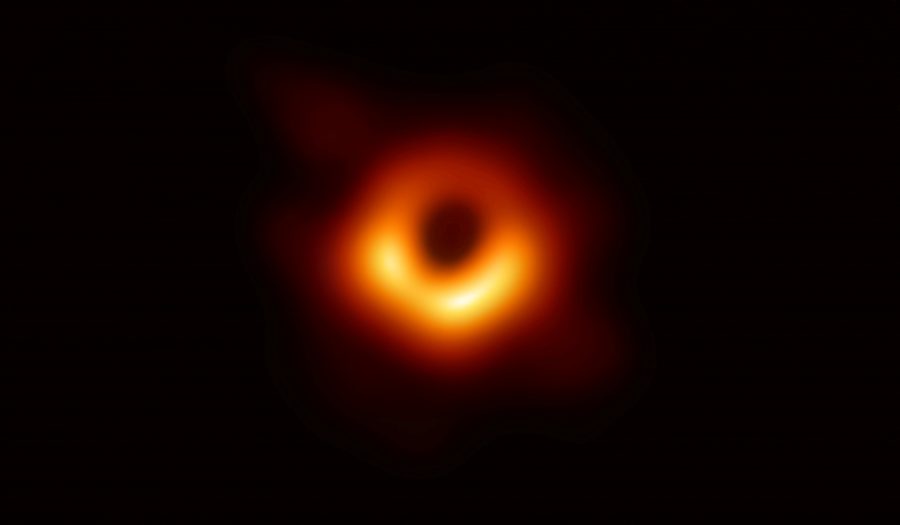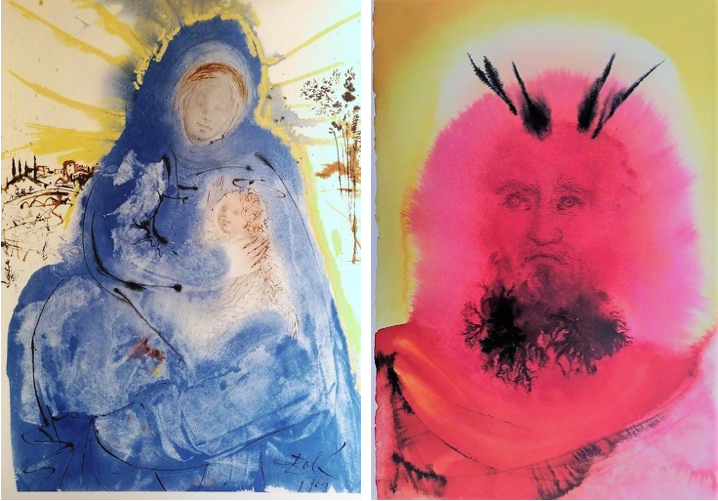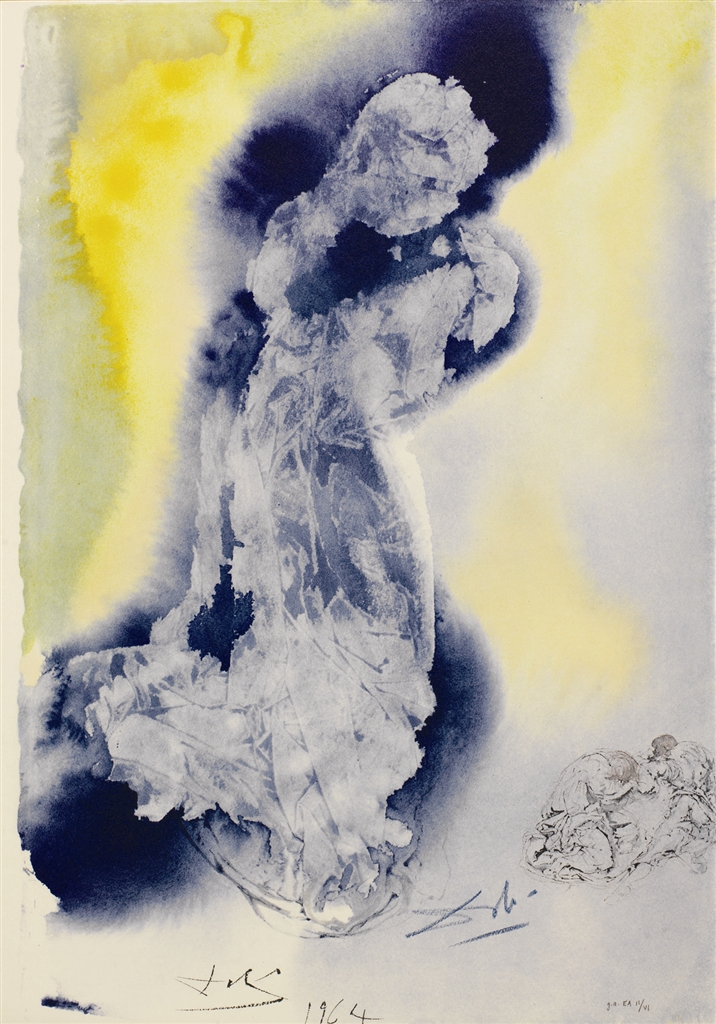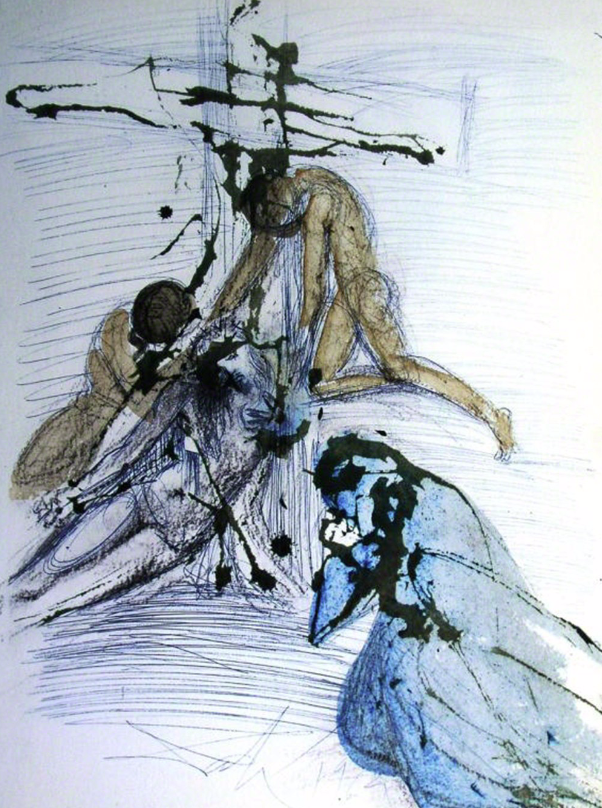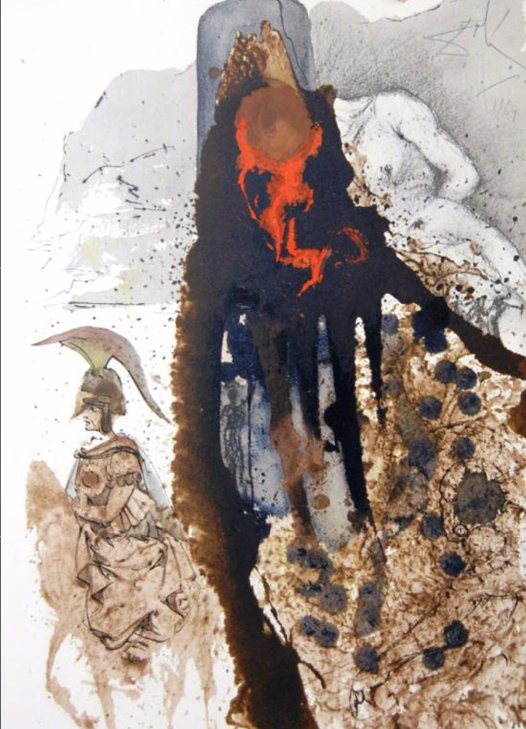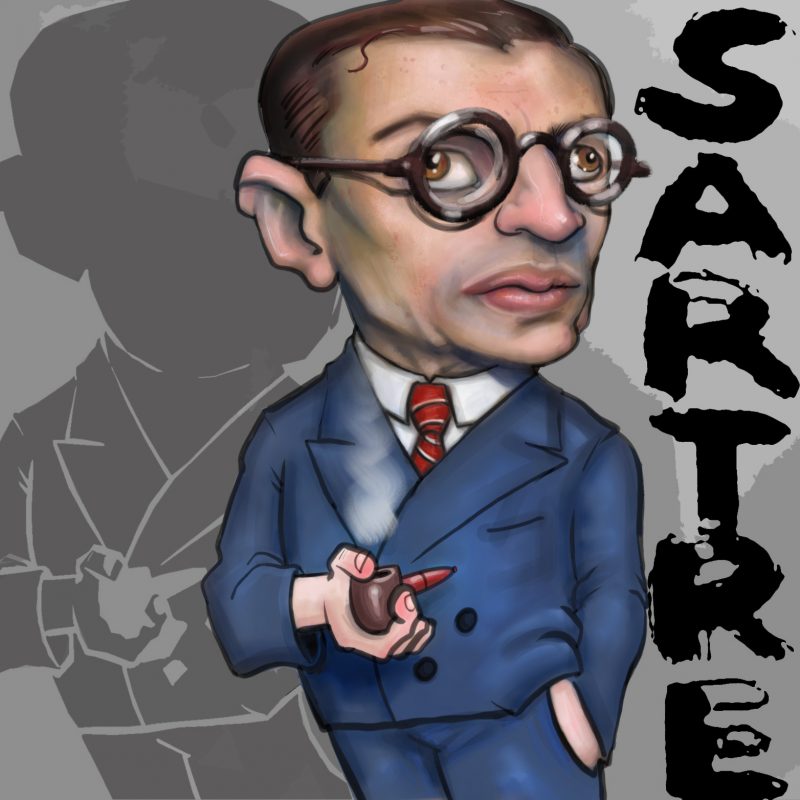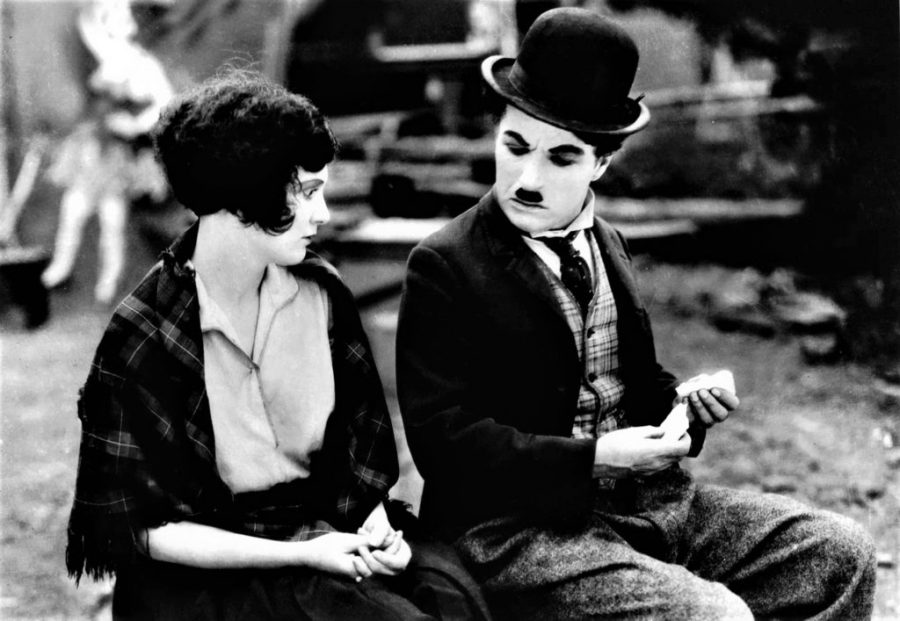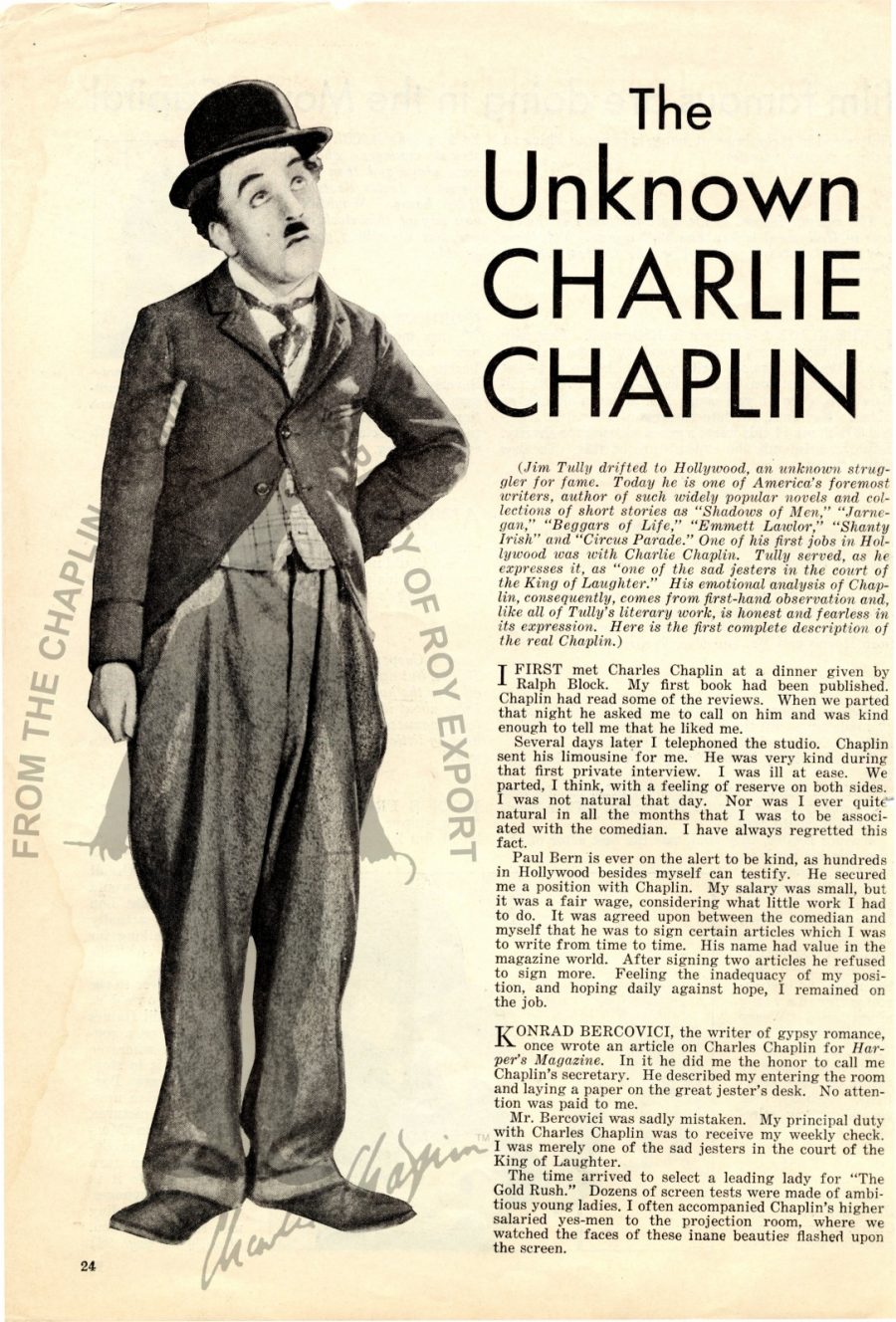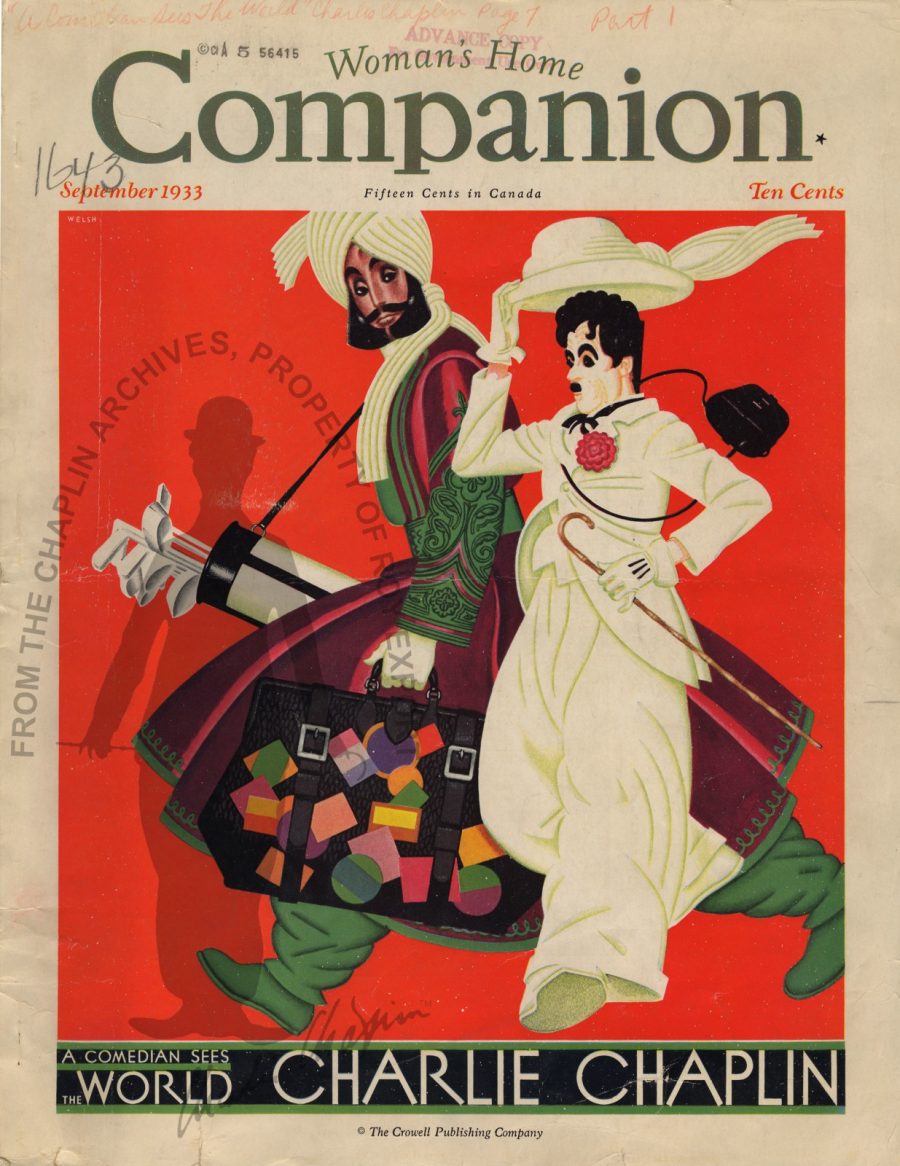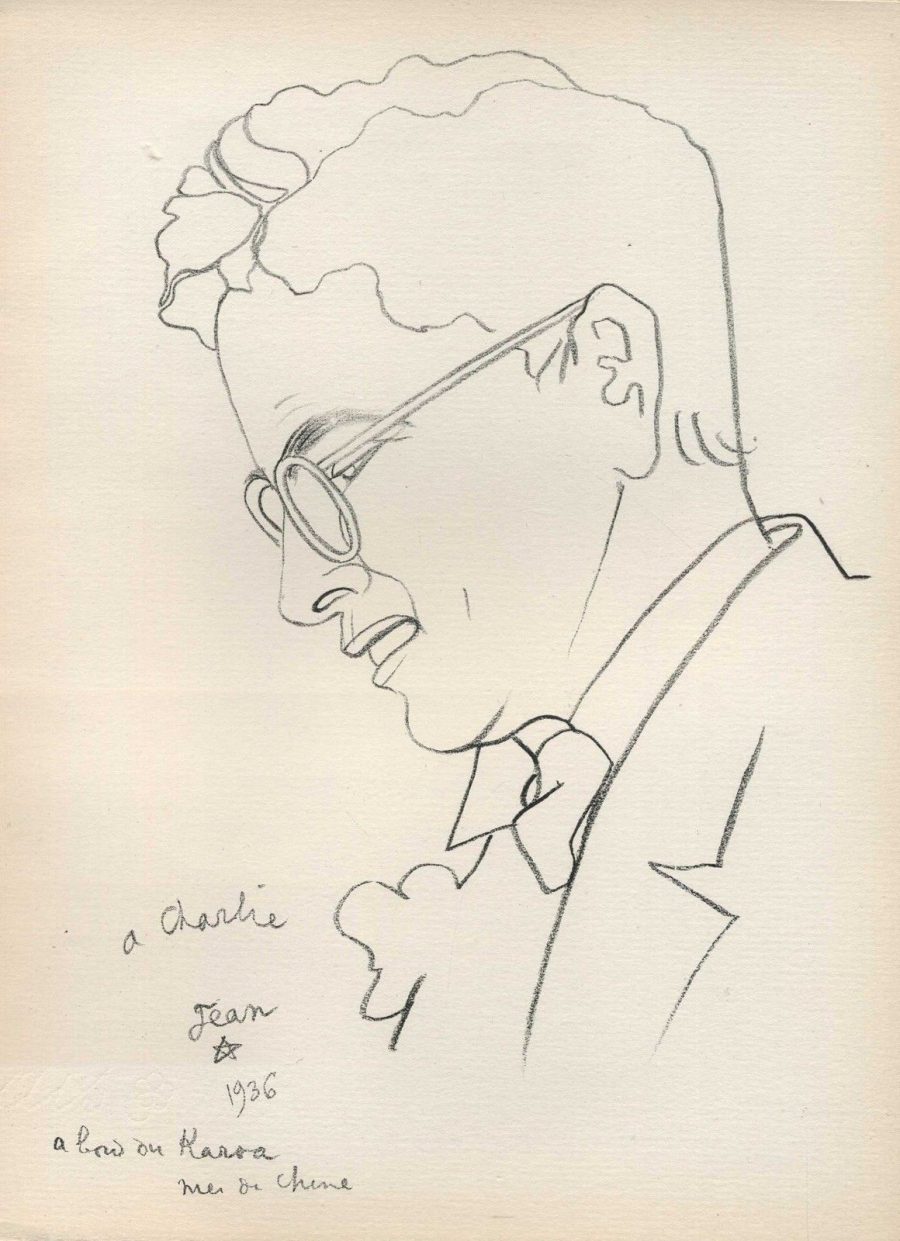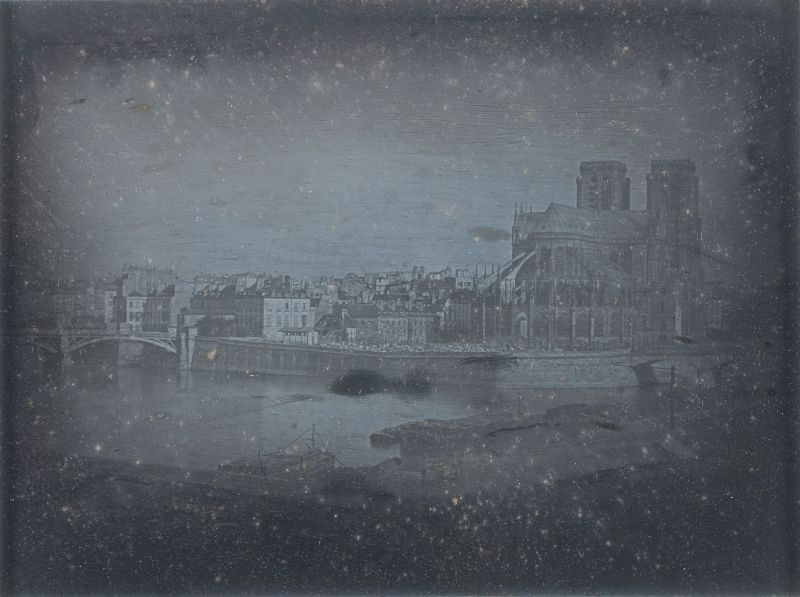[Most Recent Entries] [Calendar View]
Monday, April 15th, 2019
| Time | Event |
| 8:00a | How to Take a Picture of a Black Hole: Watch the 2017 Ted Talk by Katie Bouman, the MIT Grad Student Who Helped Take the Groundbreaking Photo What triggered the worst impulses of the Internet last week? The world's first photo of a black hole, which proved the presence of troll life here on earth, and confirms that female scientists, through no fault of their own, have a much longer way to go, baby. If you want a taste, sort the comments on the two year old TED Talk, above, so they're ordered "newest first." Katie Bouman, soon-to-be assistant professor of computing and mathematical sciences at the California Institute of Technology, was a PhD candidate at MIT two years ago, when she taped the talk, but she could've passed for a nervous high schooler competing in the National Science Bowl finals, in clothes borrowed from Aunt Judy, who works at the bank. The focus of her studies were the ways in which emerging computational methods could help expand the boundaries of interdisciplinary imaging. Prior to last week, I’m not sure how well I could have parsed the focus of her work had she not taken the time to help less STEM-inclined viewers such as myself wrap our heads around her highly technical, then-wholly-theoretical subject. What I know about black holes could still fit in a thimble, and in truth, my excitement about one being photographed for the first time pales in comparison to my excitement about Game of Thrones returning to the airwaves. Fortunately, we’re not obligated to be equally turned on by the same interests, an idea theoretical physicist Richard Feynman promoted: I've always been very one-sided about science and when I was younger I concentrated almost all my effort on it. I didn't have time to learn and I didn't have much patience with what's called the humanities, even though in the university there were humanities that you had to take. I tried my best to avoid somehow learning anything and working at it. It was only afterwards, when I got older, that I got more relaxed, that I've spread out a little bit. I've learned to draw and I read a little bit, but I'm really still a very one-sided person and I don't know a great deal. I have a limited intelligence and I use it in a particular direction. I'm pretty sure my lack of passion for science is not tied to my gender. Some of my best friends are guys who feel the same. (Some of them don't like team sports either.) But I couldn't help but experience a wee thrill that this young woman, a science nerd who admittedly could’ve used a few theater nerd tips regarding relaxation and public speaking, realized her dream—an honest to goodness photo of a black hole just like the one she talked about in her TED Talk, "How to take a picture of a black hole." Bouman and the 200+ colleagues she acknowledges and thanks at every opportunity, achieved their goal, not with an earth-sized camera but rather a network of linked telescopes, much as she had described two years earlier, when she invoked disco balls, Mick Jagger, oranges, selfies, and a jigsaw puzzle in an effort to help people like me understand.
Look at that sucker (or, more accurately, its shadow!) That thing’s 500 million trillion kilometers from Earth! (That's much farther than King's Landing is from Winterfell.) I’ll bet a lot of elementary science teachers, be they male, female, or non-binary, are going to make science fun by having their students draw pictures of the picture of the black hole. If we could go back (or forward) in time, I can almost guarantee that mine would be among the best because while I didn’t “get” science (or gym), I was a total art star with the crayons. Then, crafty as Lord Petyr Baelish when presentation time rolled around, I would partner with a girl like Katie Bouman, who could explain the science with winning vigor. She genuinely seems to embrace the idea that it “takes a village,” and that one’s fellow villagers should be credited whenever possible. (How did I draw the black hole, you ask? Honestly, it's not that much harder than drawing a doughnut. Now back to Katie!) Alas, her professional warmth failed to register with legions of Internet trolls who began sliming her shortly after a colleague at MIT shared a beaming snapshot of her, taken, presumably, with a regular old phone as the black hole made its debut. That pic cemented her accidental status as the face of this project. Note to the trolls—it wasn't a dang selfie. “I’m so glad that everyone is as excited as we are and people are finding our story inspirational,’’ Bouman told The New York Times. “However, the spotlight should be on the team and no individual person. Focusing on one person like this helps no one, including me.” Although Bouman was a junior team member, she and other grad students made major contributions. She directed the verification of images, the selection of imaging parameters, and authored an imaging algorithm that researchers used in the creation of three scripted code pipelines from which the instantly-famous picture was cobbled together. As Vincent Fish, a research scientist at MIT's Haystack Observatory told CNN:
Hey, that makes sense. As The Verge’s science editor, Mary Beth Griggs, points out, the rush to defame Bouman is of a piece with some of the non-virtual realities women in science face: Part of the reason that some posters found Bouman immediately suspicious had to do with her gender. Famously, a number of prominent men like disgraced former CERN physicist Alessandro Strumia have argued that women aren’t being discriminated against in science — they simply don’t like it, or don’t have the aptitude for it. That argument fortifies a notion that women don’t belong in science, or can’t really be doing the work. So women like Bouman must be fakes, this warped line of thinking goes… Even I, whose 7th grade science teacher tempered a bad grade on my report card by saying my interest in theater would likely serve me much better than anything I might eek from her class, know that just as many girls and women excel at science, technology, engineering, and math as excel in the arts. (Sometimes they excel at both!) (And power to every little boy with his sights set on nursing, teaching, or ballet!) (How many black holes have the haters photographed recently?) Griggs continues: Saying that she was part of a larger team doesn’t diminish her work, or minimize her involvement in what is already a history-making project. Highlighting the achievements of a brilliant, enthusiastic scientist does not diminish the contributions of the other 214 people who worked on the project, either. But what it is doing is showing a different model for a scientist than the one most of us grew up with. That might mean a lot to some kids — maybe kids who look like her — making them excited about studying the wonders of the Universe. Related Content: New Augmented Reality App Celebrates Stories of Women Typically Omitted from U.S. History Textbooks Watch a Star Get Devoured by a Supermassive Black Hole Ayun Halliday is an author, illustrator, theater maker and Chief Primatologist of the East Village Inky zine. Join her in New York City tonight for the next installment of her book-based variety show, Necromancers of the Public Domain. Follow her @AyunHalliday. How to Take a Picture of a Black Hole: Watch the 2017 Ted Talk by Katie Bouman, the MIT Grad Student Who Helped Take the Groundbreaking Photo is a post from: Open Culture. Follow us on Facebook, Twitter, and Google Plus, or get our Daily Email. And don't miss our big collections of Free Online Courses, Free Online Movies, Free eBooks, Free Audio Books, Free Foreign Language Lessons, and MOOCs. |
| 1:30p | Fashion Designers in 1939 Predict How People Would Dress in the Year 2000 Some two decades before The Jetsons brought their animated vision of the future to the small screen, the cinemagazine Pathetone Weekly ran a featurette in which the “most famous" fashion designers in the U.S. predicted what the well-dressed woman would find herself wearing in the year 2000. Cantilevered heels, multifunctional garments to go from office to evening wear in mere seconds, tech integrations, dresses made of aluminum and transparent net… As one commenter on YouTube astutely observed, “Madonna wore most of these before we even reached 2000.” As is to be expected, these futuristic fashions exhibited the flattering bias cut that we in 2019 associate with the period in which they were envisioned. Gisele Bündchen, the top supermodel of 2000, could certainly hold her own against her glamorous 1939 counterparts, but the same cannot be said of the trucker hats, low slung jeans, velour track suits and denim everything that truly defined the look of the millennium. The biggest loser of the year AD 2000, as envisioned by those famous designers of 1939, is the American male, whose drapey harem pants, Prince Valiant ‘do, and ill advised facial hair make George Jetson look like like Clark Gable. The poor guy does deserve some cool points for wearing a phone, though. (It’s like they had a crystal ball!) And his radio may well prefigure the iPod, which made its debut in 2001. Because pockets were presumed to be going the way of the dodo (and skirts for women), a utility belt holds his keys, change, and “candy for cuties.” This last item is surely an unnecessary burden, given the narrative emphasis on the female clothing designs' man-catching prowess. (Imagine the 21st-century feminine disappointment when their electric headlights revealed what they’d reeled in.) Perhaps the most useful innovation to come from this exercise is the “electric belt to adapt the body to climactic changes.” Don’t tell 1939, but I think we’re gonna need a bigger belt. As to the identities of the famous designers and the delightfully chatty (“Ooh, swish!”narrator), they seem to have been lost to the ages. Readers, if you have any intel, please advise. Related Content: 1930s Fashion Designers Predict How People Would Dress in the Year 2000 Ayun Halliday is an author, illustrator, theater maker and Chief Primatologist of the East Village Inky zine. Join her in New York City on April 15 for the next installment of her book-based variety show, Necromancers of the Public Domain. Follow her @AyunHalliday. Fashion Designers in 1939 Predict How People Would Dress in the Year 2000 is a post from: Open Culture. Follow us on Facebook, Twitter, and Google Plus, or get our Daily Email. And don't miss our big collections of Free Online Courses, Free Online Movies, Free eBooks, Free Audio Books, Free Foreign Language Lessons, and MOOCs. |
| 3:00p | Salvador Dalí’s Illustrations for The Bible (1963)
Some might have taken offense when Salvador Dalí began illustrating the Bible in 1963. The notorious Surrealist “went to jail for his artworks as a young man,” writes Jackson Arn writes at Artsy, but he “lived long enough to lend his legendary panache to Hollywood movies and Alka-Seltzer commercials.” Along the way, he gained a reputation for having a rather vicious character. George Orwell, reviewing Dalí’s autobiography, described him as “disgusting” for his fanatical harassment and abuse of other people. But, Orwell went on, “Dalí is a draughtsman of very exceptional gifts. He is also, to judge by the minuteness and the sureness of his drawings, a very hard worker…. He has fifty times more talent than most of the people who would denounce his morals and jeer at his paintings.” Dalí hardly needed the defense of his morals or his paintings, nor might he have wanted it. That was the wrong sort of attention. But maybe he himself was surprised by a later career turn as an illustrator of respectable “Great Books”—including not only Judeo-Christian scripture, but also Don Quixote, Macbeth, The Divine Comedy, Alice in Wonderland, and much more. The artist who seemed to have nothing but contempt for traditional canons approached these projects with the skill and professionalism Orwell couldn’t help but admire, as well as subtleties and understated tonal shifts we might not have associated with his work.
These are not his first religious subjects; he had always referenced big scenes and broad themes in Catholicism. But the illustrations represent a deeper engagement with the primary text—105 paintings in all, each based on select passages from the Latin Vulgate Bible. Published by Rizzoli in 1969, Biblia Sacra (The Sacred Bible) was commissioned by Dalí’s friend, Dr. Guiseppe Albareto, a devout Catholic whose intention “for this massive undertaking,” writes the Lockport St. Gallery, “was to bring the artist back to his religious roots.” Whatever effect that might have had, Dalí approaches the project with the same diligence evident in his other illustrations—he takes artistic risks while making a sincere effort to stay close to the spirit of the text. If he did this work for the money, he earned it.
Dalí's illustrations “aren’t some kind of subversive prank," writes Arn. "The luminous watercolors he produced for the Bible are, in the main, earnest renderings of their sacred subjects.” Perhaps the book illustrations have attracted so little attention from art historians because they lack the sensationalism and outrage Dalí aggressively cultivated in his public persona. Maybe these paintings, as German gallerist Holger Kempkens puts it, show “something of a spiritual side of Dalí.” Or maybe they just add to a bigger picture that shows what he could do with narratives not of his own making, but which he clearly respected and found challenging and stimulating. These qualities apply to many parts of the Bible as well as to great literary epics, including those based on the Bible, like John Milton’s Paradise Lost, which Dalí illustrated in a series of surprisingly spare, elegant etchings.
You can buy an original set of Dalí’s illustrated Bible in five volumes from The Lockport Street Gallery (email for a price and condition report); buy a more affordable book online that features and explores Dalí's illustrations; or see all 105 of Dalí’s Biblical illustrations (and purchase some 1967 prints) at Artsy. Related Content: The Tarot Card Deck Designed by Salvador Dalí Alice’s Adventures in Wonderland, Illustrated by Salvador Dalí in 1969, Finally Gets Reissued Salvador Dalí’s Haunting 1975 Illustrations for Shakespeare’s Romeo and Juliet Josh Jones is a writer and musician based in Durham, NC. Follow him at @jdmagness Salvador Dalí’s Illustrations for The Bible (1963) is a post from: Open Culture. Follow us on Facebook, Twitter, and Google Plus, or get our Daily Email. And don't miss our big collections of Free Online Courses, Free Online Movies, Free eBooks, Free Audio Books, Free Foreign Language Lessons, and MOOCs. |
| 5:03p | Should Literature Be Political? A Glimpse into Sartre by The Partially Examined Life
Jean-Paul Sartre produced plays and novels like The Respectful Prostitute (1946), which explored racism in the American South. These works were criticized as too polemical to count as good literature. What might in the present day culminate only in a Twitter fight led Sartre to publish a whole book defending his practices, called What Is Literature? (1946). In the clip below, Mark Linsenmayer from the Partially Examined Life Philosophy Podcast explains Sartre's view, outlining both how strange it is and why you might want to take it seriously anyway. In short, Sartre sees the act of writing fiction as an ethical appeal to his reader's freedom. The reader is challenged to hear the truths the work expresses, to understand and take action on them. More directly, the reader is challenged to read the work, which involves a demand on the reader's attention and imagination to "flesh out" the situations the book describes. The reader takes an active role in completing the work, and this role can be abandoned freely at any time. If a writer creates an escapist fantasy, the reader is invited to escape. If the writer produces a piece of lying propaganda, then the reader is being invited to collaborate in that fundamentally corrupt work. So if writing is always an ethical, political act, then Sartre shouldn't be blamed for producing overtly political work. In fact, writers who deny that their work is political are dodging their own responsibility for playing haphazardly with this potentially dangerous tool. Their work will produce political effects whether they like it or not. The Partially Examined Life episode 212 (Sartre on Literature) is a two-part treatment of the first two chapters of this text, weighing Sartre's words to try to understand them and determine whether they ultimately make sense. Listen to the full episode below or go subscribe to The Partially Examined Life Philosophy Podcast at partiallyexaminedlife.com. Part 1: Part 2: Mark Linsenmayer is the host of The Partially Examined Life and Nakedly Examined Music podcasts. Related Content: Jean-Paul Sartre on How American Jazz Lets You Experience Existentialist Freedom & Transcendence Jean-Paul Sartre Breaks Down the Bad Faith of Intellectuals Should Literature Be Political? A Glimpse into Sartre by The Partially Examined Life is a post from: Open Culture. Follow us on Facebook, Twitter, and Google Plus, or get our Daily Email. And don't miss our big collections of Free Online Courses, Free Online Movies, Free eBooks, Free Audio Books, Free Foreign Language Lessons, and MOOCs. |
| 6:00p | The Charlie Chaplin Archive Opens, Putting Online 30,000 Photos & Documents from the Life of the Iconic Film Star
Charlie Chaplin knew his movies were popular, but could he have imagined that we'd still be watching them now, as the 130th anniversary of his birth approaches? And even if he could, he surely wouldn't have guessed that even the materials of his long working life would draw great fascination in the 21st century — much less that they would be made instantaneously available to the entire world on a site like the Charlie Chaplin Archive. A project of the Fondazione Cineteca di Bologna, which has previously worked to restore and preserve Chaplin's filmography itself, it constitutes the digitization of Chaplin's "very own and painstakingly preserved professional and personal archives, from his early career on the English stage to his final days in Switzerland."
This online archive includes everything from "the first handwritten notes of a story line to the shooting of the film itself, stage by stage documentary evidence of the development of a film, or a project that never even became a film," as well as materials not directly related to the movies: "poems, lyrics, drawings, programmes, contracts, letters, magazines, travel souvenirs, comic books, cartoon strips, praise and criticism." The vast majority of these items have never before been made publicly available, and all of them enrich our picture of the maker of classic comedies like Modern Times, City Lights, and The Great Dictator as well as the highly eventful periods of history through which he lived.`
You can explore the Charlie Chaplin Archive by plunging straight into its collection of more than 4,000 images and nearly 25,000 documents, or you can enter through its curated topic sections: one on Chaplin's early career offers a glimpse into the humble launch of a cultural phenomenon that would go on to transcend cultures and eras; another on music shows Chaplin, who grew up in a musical family with musical ambitions of his own, conducting orchestras; and a section on travel presents clippings and photos related to his journeys to places like Bali and Japan, from which he returned on the same boat as Jean Cocteau. "Cocteau could not speak a word of English," Chaplin wrote in his autobiography of the voyage home. "Neither could I speak French, but his secretary spoke a little English, though not too well, and he acted as interpreter for us."
"That night we sat up into the small hours, discussing our theories of life and art," Chaplin continues, quoting Cocteau's secretary thus: "Mr Cocteau... he say... you are a poet... of zer sunshine... and he is a poet of zer night." These words, in turn, appear quoted (alongside the sketch of Chaplin by Cocteau above) on the Charlie Chaplin Archive's "Chaplin and Jean Cocteau" page, one of its continuously updated stories. Others collect material related to Chaplin's luxury-item purchases, Chaplin as director, and Chaplin's final speech delivered as the title character of The Great Dictator, which a recent announcement about the archive calls "one of the most licensed elements of Chaplin’s work in the 21st century" — a time whose surreality Cocteau might well recognize, and whose absurdity Chaplin certainly would. Related Content: 65 Free Charlie Chaplin Films Online Charlie Chaplin Does Cocaine and Saves the Day in Modern Times (1936) Charlie Chaplin Films a Scene Inside a Lion’s Cage in 200 Takes Watch Charlie Chaplin Demand 342 Takes of One Scene from City Lights Captivating GIFs Reveal the Magical Special Effects in Classic Silent Films Based in Seoul, Colin Marshall writes and broadcasts on cities, language, and culture. His projects include the book The Stateless City: a Walk through 21st-Century Los Angeles and the video series The City in Cinema. Follow him on Twitter at @colinmarshall or on Facebook. The Charlie Chaplin Archive Opens, Putting Online 30,000 Photos & Documents from the Life of the Iconic Film Star is a post from: Open Culture. Follow us on Facebook, Twitter, and Google Plus, or get our Daily Email. And don't miss our big collections of Free Online Courses, Free Online Movies, Free eBooks, Free Audio Books, Free Foreign Language Lessons, and MOOCs. |
| 10:37p | Notre Dame Captured in an Early Photograph, 1838
According to Le Monde, the fire that ravaged Notre Dame is now mercifully under control. Two thirds of the roof--and that beautiful spire--have been badly damaged. The same likely goes for some precious stained glass. But the two towers still stand tall. And the structure of the cathedral has been "saved and preserved overall," reports the commander of Paris' firefighting brigade. The photo above, taken by Louis Daguerre in 1838, helps pay visual tribute to Emmanuel Macron's words tonight, “This history is ours... I say to you very solemnly, this cathedral, we will rebuild it.” Godspeed. Notre Dame Captured in an Early Photograph, 1838 is a post from: Open Culture. Follow us on Facebook, Twitter, and Google Plus, or get our Daily Email. And don't miss our big collections of Free Online Courses, Free Online Movies, Free eBooks, Free Audio Books, Free Foreign Language Lessons, and MOOCs. |
| << Previous Day |
2019/04/15 [Calendar] |
Next Day >> |

